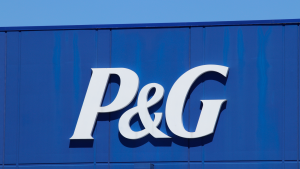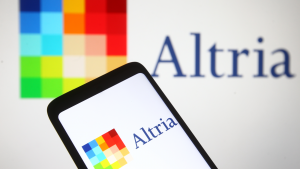A few questions need to be answered before launching into this article. First, what qualifies blue-chip stocks? The answer is partially subjective and partially objective. Subjectively speaking, a blue-chip company is one that is huge and has an excellent reputation. So, blue-chip stocks is one that represents a huge company with an excellent reputation. They also tend to have dependable earnings and often pay dividends.
More objectively speaking, a blue-chip stock is one with a market capitalization in the billions and is usually among the top-three companies in its market, if not the outright leader.
Another question that needs to be answered is what exactly are ‘strong’ dividend yields? This is again a subjective determination. But the general consensus is that yields between 2% and 6% are ‘strong’.
So for the the purposes of this discussion we’ll stay within that range. Remember, extraordinarily high yields pose a risk as they are often unsustainable. Below are seven of those blue-chip stocks:
| MCD | McDonald’s | $245.12 |
| PG | Procter & Gamble | $145.21 |
| MO | Altria | $49.46 |
| CAT | Caterpillar’s | $226.01 |
| AVGO | Broadcom | $572.01 |
| BP | BP | $33.93 |
| BMY | Bristol Meyers Squibb | $76.71 |
Blue-Chip Stocks: McDonald’s (MCD)

Yield: 2.25%
The fast-food giant might not be particularly well-known as a dividend stock, but it certainly is. McDonald’s (NYSE:MCD) stock comes with a dividend that hasn’t been reduced since 1977. So there’s little reason to expect that it should reduce it anytime soon simply based on the fact that it hasn’t happened for so long. True, past is not prologue and these are volatile times, to say the least.
Encouragingly though, McDonald’s stock comes with a payout ratio of 0.56. For financially strong companies like McDonald’s, a payout ratio below 0.75 is considered to be very stable. Further, the dividend’s five-year growth rate is 8.4%. From most technical perspectives, the dividend looks to be extremely safe.
Beyond its strong dividend, McDonald’s is otherwise a reasonable investment to consider. Sales continue to increase, up 12% in the most recent quarter. The company will continue to deal with cost issues but demand is unlikely to wane as consumers seek value.
Procter & Gamble (PG)

Yield: 2.52%
Procter & Gamble (NYSE:PG) is one o the biggest consumer packaged goods companies in the world. As such, there’s a good chance you have one or more of its products in your home. Whether it’s Gillette, Pampers, Crest, or Old Spice, the firm’s ubiquity makes it a household name.
That ubiquity also implies that Procter & Gamble sells a lot of products. In fact, it does. The company generated $19.4 billion of sales in the most recent quarter. That top-line revenue was 7% higher on a year-over-year basis.
That alone was encouraging. However, the company’s organic sales increased by 10%. That suggests that Procter & Gamble’s household name brands will continue to see strong demand.
Beyond its strong growth is the company’s strong dividend. There are several metrics that indicate just how attractive it is. It hasn’t been reduced since 1957. That’s about as comforting as it gets for investors.
Altria (MO)

Yield: 7.27%
I started this article by noting that ‘strong’ dividend yields range as high as 6%. The implication is that yields above 6% are risky. Generally speaking, firms that offer higher yields do so as a sort of enticement to attract investor capital.
And Altria (NYSE:MO) stock does, in fact, represent more risk than other investments. That is evidenced by its 7.27% dividend.
The reason investors are more hesitant to sink their capital into Altria is that it is a tobacco company. A concerted effort to curb cigarette use continues and companies like Altria don’t face the same macroenvironment they once did.
That was evident in Q1 sales that slid 2.4% on a year-over-year basis. But for investors, there is reason to be optimistic. Altria reaffirmed its 2022 EPS guidance. That means share prices should remain steady. And MO stock is backed by a 6.71% dividend that pays nicely.
Caterpillar (CAT)

Yield: 1.93%
Investors probably aren’t going to be super excited about Caterpillar’s (NYSE:CAT) dividend which yields barely 2%. It isn’t that it is at risk of reduction. That hasn’t happened since 1992.
But at 2%, it simply isn’t that high. The thing is, Caterpillar could comfortably increase the dividend of its stock. Its payout ratio is 0.37, well below the 0.75 (75%) of earnings that is considered risky for a stable company. I’m not implying that the company should increase it, but it could.
In any case, Caterpillar is a blue-chip firm worth considering. A few high-level metrics speak to that notion. For one, the company has bested earnings expectations in each of the past four quarters. Secondly, it’s trading at a discount based on consensus target prices that peg it at $241. It currently trades below $220.
One reason to like Caterpillar is that it is attempting to diversify its revenue streams. Rather than remain over-reliant on new equipment sales it is prioritizing service revenues by refurbishing aging equipment. The effort not only decreases risk but also quiets environmental concerns that the company’s manufacturing practices harm the environment.
Blue-Chip Stocks: Broadcom (AVGO)

Yield: 2.86%
Broadcom (NASDAQ:AVGO) is less heralded than many more prominent semiconductor stocks.
But that relative anonymity is a blessing. Because while Broadcom has consistently outperformed expectations over the past four quarters, its price remains discounted. The fact is that AVGO stock carries a target price just over $700 yet currently trades at $570.
The company is making ‘unsexy’ bets while hoping that rational and conservative investors will buy into the idea that low-profile products can produce outsized returns. That was exactly the implication in a Wall Street Journal article highlighting Broadcom’s recent $61 billion purchase of VMware.
The idea is that low-profile enterprise software will continue to boom. It could triple software sales which might soon account for nearly 50% of overall revenues.
BP (BP)

Yield: 3.83%
BP (NYSE:BP) stock will remain attractive to investors for multiple reasons. One, its buybacks and profitably in a tight oil market. And two, its broader strategy in a changing energy landscape.
Oil majors are notably aggressive in their stock buybacks in recent times. BP was not the only oil major to increase its buybacks. But analysts expect that BP will be particularly aggressive in buying back shares in the next few years.
RBC analyst Bharaj Borkhataria believes the firm could reduce its share count by as much as 50% in the next five years. That means current holders will be entitled to not only more valuable shares but also a great share of earnings.
Blue-Chip Stocks: Bristol Myers Squibb (BMY)

Yield: 2.84%
Based on target prices, Bristol Meyers Squibb (NYSE:BMY) stock has roughly 8% upside. That is a decent enough return, but factor in the 54 cent quarterly dividend and that upside suddenly rises to 9.51%.
The company is performing well and has bested earnings expectations over the last several quarters. But given that its payout ratio is 73%, I would simply expect that Bristol Meyers Squibb maintains its dividend rather than raise it. It certainly shouldn’t decrease it as that last occurred in 1987.
Whether BMY stock rises is a question of how well it can replace revenues as its main drug, Revlimid, wanes. But optimistic outlooks suggest that cancer and heart drugs currently being developed could soon fill the gap.
On the date of publication, Alex Sirois did not have (either directly or indirectly) any positions in the securities mentioned in this article. The opinions expressed in this article are those of the writer, subject to the InvestorPlace.com Publishing Guidelines.
